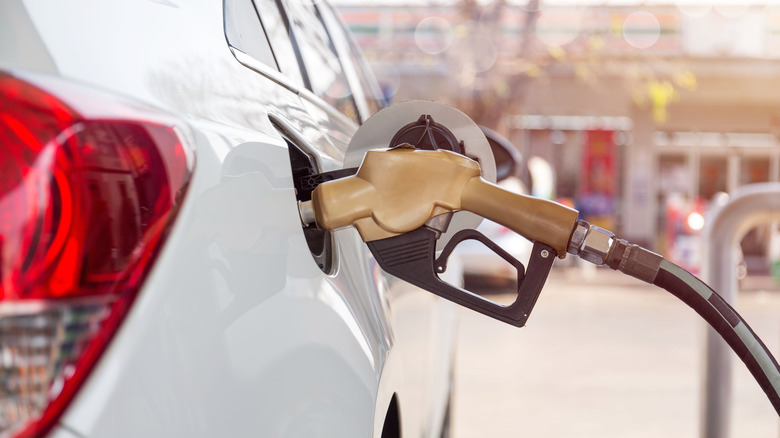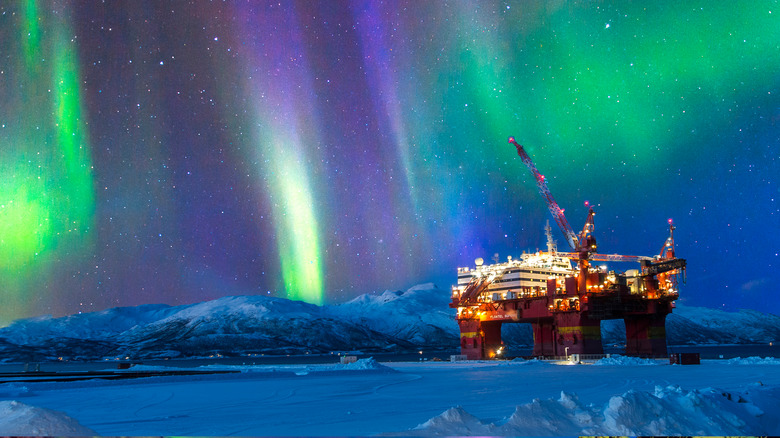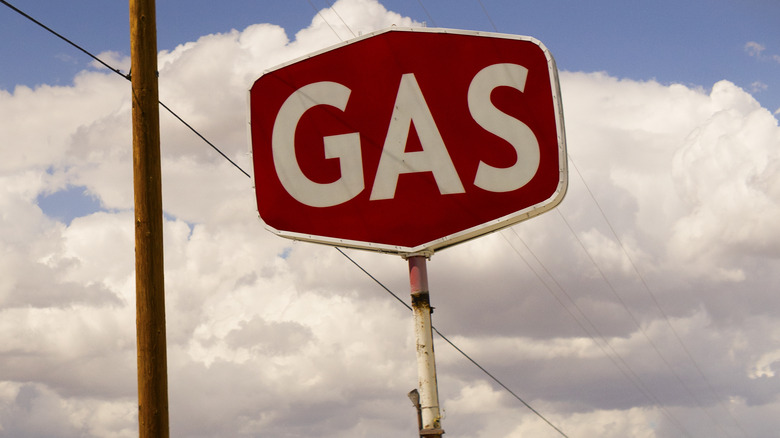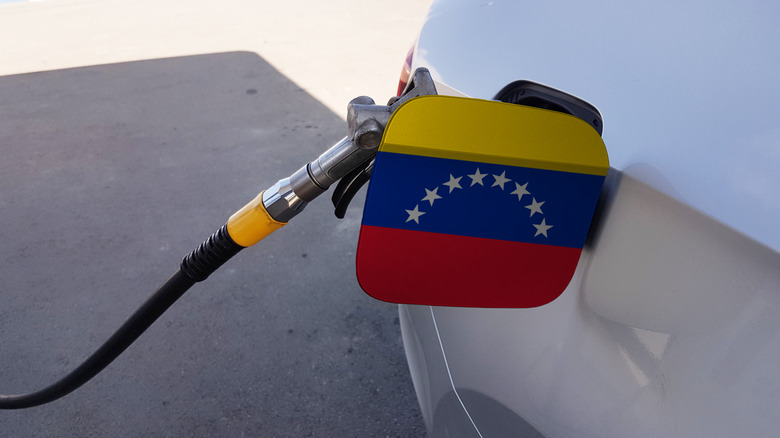What Country Pays The Most For Gas?
On Tuesday, March 8, against the background of the Russian invasion of Ukraine, CNN Business reported the news that U.S. gas prices had hit an all-time high of $4.17 per gallon, having jumped 10 cents since the previous day. The price smashed the previous record of $4.11, a peak hit back in 2008 when demand dropped dramatically as a result of that year's financial crisis (per Investopedia).
According to the same source, the 2022 record price for gas was reached after a rise of 55 cents in a week, and an 18% price inflation since the invasion began on February 24. Tom Kloza, global head of energy analysis for the Oil Price Information Service (OPIS), told CNN, "I think we'll hit $4.50 a gallon before it turns around ... The risk is how bad this gets, how long this goes on. Even $5 a gallon nationwide is possible. I wouldn't have predicted that before the fighting started."
Against many experts' expectations, however, gas prices did drop marginally the following week, but the period has marked one of the most volatile in the history of gas pricing, according to The New York Times, while President Joe Biden confirmed that Americans will certainly notice the price increases at the pump. But how does the U.S. compare to the wider world when it comes to gas prices, and where are they at their very highest?
The highest gas prices on Earth
Though Americans should surely be worried about rising gas prices, the wider picture shows that the U.S. is having a much smoother time than many other countries around the world when it comes to getting bang for their buck when it comes to filling a tank.
At the time the U.S. was experiencing record-high gas prices, Forbes reported that Hong Kong — though not a country in itself, but a "Special Administrative Region of China," according to another Investopedia article — had the highest gas prices in the whole world, with motorists shelling out an eyewatering $10.71 per American gallon.
Back in 2017, the South China Morning Post reported that Hong Kong's anti-trust regulator claimed that the region's gas prices — which were exceptionally high even then — were the result of "unusual practices" when it came to pricing. That was just scratching the surface of Hong Kong's gas problems.
Hong Kong's gas pricing problem
The "unusual practices" which were said to be affecting gas prices in Hong Kong were identified by the city's Competition Commission as an intentional limiting of consumer choice. According to the South China Morning Post, oil companies unfairly give Hong Kong residents the option only to buy the highest grade of unleaded petroleum on the market, known as 98 RON, when a lower-grade version, 95 RON, would be a cheaper option for most motorists and also work perfectly in the vast majority of vehicles.
Per the same source, oil companies were also accused of "rocket and feather pricing." That means that when prices rise, they rise quickly, yet savings are slow to be passed on to the consumer when prices do drop. One expert argued that "oil companies should improve transparency in their pricing and make public more information about their cost structures."
But even in 2020, when fuel prices dropped to a low not seen for many years, Hong Kong was still feeling the pinch at the pump and paying the world's highest gas prices. Per the South China Morning Post, factors included the fact that the cost of land for petrol stations to be built upon had skyrocketed fourfold over the course of the previous decade, and that motorists paid an enormous 40% fuel tax on all gas they bought at the pump.
The highest gas prices by country
However, if we take Hong Kong's status as a semi-autonomous region of China into account, then the average price across the nation as a whole is a different picture. As of March 2022, Chinese motorists pay just over $5 per U.S. gallon, slightly above the worldwide average of $4.90, according to Global Petrol Prices.
The highest prices per country are actually found in Europe, with Norway (pictured) leading the pricing league with a price of just of $10 per U.S. gallon, per the same source. Norway is trailed slightly by Denmark and Lichtenstein, with motorists in both countries paying around $9 per U.S. gallon.
There is another glut of countries paying more than $8 per U.S. gallon, including Sweden, the Netherlands, Finland, Israel, Singapore, Germany, Iceland, Zimbabwe, Germany, and Italy, while countries including France, Greece, Portugal, and the United Kingdom all pay more than $7 per U.S. gallon at the pump.
Why do gas prices vary so much?
Though it may be assumed that countries that produce their own oil would be those territories that enjoy the cheapest prices at the gas station pump, according to Forbes, this isn't always the case. The outlet cites Norway as an example of an oil-producing country that nevertheless puts heavy duties on gas purchases, leading Norwegians to pay the highest prices on average for a full tank outside of notoriously expensive Hong Kong. The reason for this is that the Norwegian government has committed to end the country's dependence on fossil fuels as soon as possible, in favor of renewable energy.
Taxes on fuel are generally high across Europe. According to CNN, it is "government policy" that most greatly influences the price of gas around the world, rather than supply or production costs, or import duties, and as more and more countries make the necessary move towards green energy, it is likely that fuel tax will become a more widespread phenomenon than ever before.
The cheapest gas prices on earth
As Forbes reported, however, several oil-producing countries are still happy to pass the savings on to the consumer, leading to gas being cheaper in some territories than a bottle of drinking water.
The cheapest prices on the planet are found first in Venezuela, where motorists pay less than 10 cents per gallon for their gas. Libya and Iran also sell fuel to their citizens for a pittance, charging around 12 cents and 19 cents, respectively, according to a March 7 report at Global Petrol Prices. All three are oil-producing countries, and offer fuel at far cheaper prices than anywhere else in the world. The next cheapest countries — Syria, Algeria, Angola, Kuwait, and Russia — each price gas between $1 and $1.50 per U.S. gallon.
Nevertheless, though the price of gas in some countries may have American motorists dreaming of the road trip of a lifetime, U.S. prices still hover some distance below the worldwide average, though in the volatile world of oil pricing, it is almost impossible to predict what prices will look like in the future.





